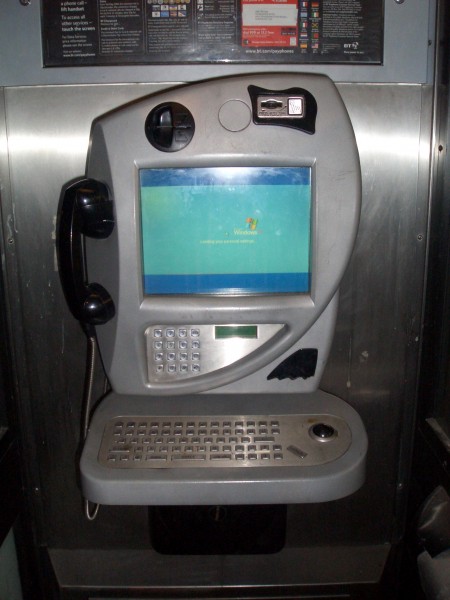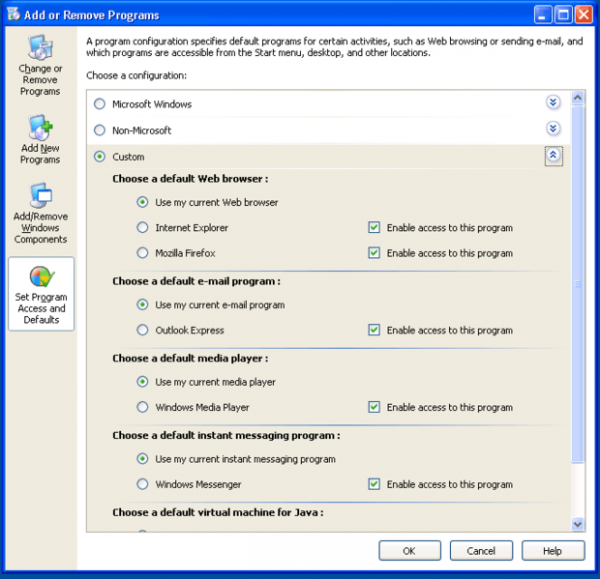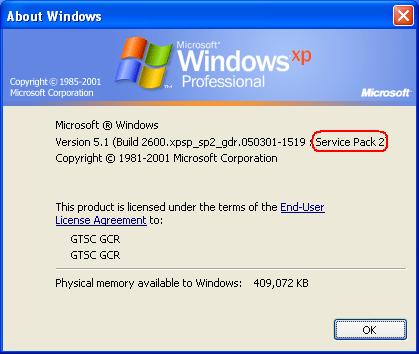Microsoft launched Windows XP on Oct. 25, 2001. By every measure it is the most successful Windows version ever, bringing stability to the platform, too.
Anyone can easily dismiss Windows XP, because it's so overly familiar, having stayed long in market and so seemingly unchanged. But Microsoft accomplished much around the venerable operating system, which quickly became a stable platform for the company, too. In fact, change defined XP during its first half-decade in market, but built on the stable platform beneath. Within three weeks of the launch, Microsoft announced the Tablet PC version and Media Center Edition, then codename "Freestyle", in January 2002.
Windows XP's evolution should be a case study for other operating system developers. Perhaps it is; I suspect that if anyone looks hard enough they'll see Apple copying -- following with Mac OS X (and iOS derived from it) a pattern of innovation by iteration Microsoft applied to Windows XP.
Please celebrate with us a decade of Windows XP.
![Microsoft then-CEO Bill Gates poses with Windows XP "gold" disc. [Microsoft]](http://betanews.com/wp-content/uploads/2011/10/Gates-and-XP-RTM.jpg)
Microsoft then-CEO Bill Gates poses with Windows XP "gold" disc. [Microsoft]
![Bill Gates signs off Windows XP gold master, Aug. 24, 2001. A helicopter waits to fly off the code. [Ari Pernick]](http://betanews.com/wp-content/uploads/2011/10/Bill-Gates-signs-off-Windows-XP-gold-code-600x450.jpg)
Bill Gates signs off Windows XP gold master, Aug. 24, 2001. A helicopter waits to fly off the code. [Ari Pernick]
![Windows XP boxes come off the assembly lines during simpler times. Microsoft offered only two versions of the operating system. [Microsoft]](http://betanews.com/wp-content/uploads/2011/10/Windows-XP-boxes.jpg)
Windows XP boxes come off the assembly lines during simpler times. Microsoft offered only two versions of the operating system. [Microsoft]
![While people wanting this disc waited until Oct. 25, 2001, XP shipped on new PCs more than a month earlier. [Priceminister]](http://betanews.com/wp-content/uploads/2011/10/Windows-XP-disc.jpg)
While people wanting this disc waited until Oct. 25, 2001, XP shipped on new PCs more than a month earlier. [Priceminister]
![Sign of the Times -- the launch took place in New York about six week after the Twin Towers fell. Microsoft culled back its launch plans in respect to the fallen. [Nate Mook]](http://betanews.com/wp-content/uploads/2011/10/Marriott-Marquis.jpg)
Sign of the Times -- the launch took place in New York about six week after the Twin Towers fell. Microsoft culled back its launch plans in respect to the fallen. [Nate Mook]
![Bill Gates and Jim Allchin kick off the Windows XP launch event, Oct. 25, 2001. [Nate Mook]](http://betanews.com/wp-content/uploads/2011/10/Bill-Gates-and-Jim-Allchin.jpg)
Bill Gates and Jim Allchin kick off the Windows XP launch event, Oct. 25, 2001. [Nate Mook]
![Choir sings "America the Beautiful" during Windows XP's launch. The song had renewed meaning for many, following terrorist attacks against the World Trade Center and US Pentagon the previous month. [Nate Mook]](http://betanews.com/wp-content/uploads/2011/10/America-the-Beautiful.jpg)
Choir sings "America the Beautiful" during Windows XP's launch. The song had renewed meaning for many, following terrorist attacks against the World Trade Center and US Pentagon the previous month. [Nate Mook]
![Gateway gave out cows -- befitting its black-and-white moo herd motif -- during Windows XP's New York launch. The direct PC maker started selling XP systems more than a month earlier. [Larry Seltzer]](http://betanews.com/wp-content/uploads/2011/10/Windows-XP-Moo-Cow.jpg)
Gateway gave out cows -- befitting its black-and-white moo herd motif -- during Windows XP's New York launch. The direct PC maker started selling XP systems more than a month earlier. [Larry Seltzer]
![Sting performs in Bryant Park, as part of Windows XP launch festivities, Oct. 25, 2001. [Tammy Loh]](http://betanews.com/wp-content/uploads/2011/10/Sting-concert-for-Windows-XP-600x450.jpg)
Sting performs in Bryant Park, as part of Windows XP launch festivities, Oct. 25, 2001. [Tammy Loh]
![About three weeks after XP's launch, Gates unveiled Windows XP Tablet PC Edition during Comdex 2001. The first Tablet PCs debuted about a year later. Here Gates holds one during the November 2002 launch event. [Microsoft]](http://betanews.com/wp-content/uploads/2011/10/Bill-Gates-and-Tablet-PC-468x600.jpg)
About three weeks after XP's launch, Gates unveiled Windows XP Tablet PC Edition during Comdex 2001. The first Tablet PCs debuted about a year later. Here Gates holds one during the November 2002 launch event. [Microsoft]

Microsoft unveiled Windows XP Embedded for ATM, cash registers and other devices on Nov. 28, 2001. Here a BT Internet payphone runs the OS.
![About six weeks after Windows XP launched, Bill Gates debuted a second, media-oriented user interface codename "Freestyle". The first Windows XP Media Center Edition PCs shipped for holiday 2002. Here Gates poses with MCE 2005, three years later. [Microsoft]](http://betanews.com/wp-content/uploads/2011/10/Bill-Gates-and-Media-Center-2005.jpg)
About six weeks after Windows XP launched, Bill Gates debuted a second, media-oriented user interface codename "Freestyle". The first Windows XP Media Center Edition PCs shipped for holiday 2002. Here Gates poses with MCE 2005, three years later. [Microsoft]
![Microsoft chose actor Tom Arnold as its spokesman for Windows XP Media Center Edition, which officially launched Oct. 29, 2002. [Microsoft]](http://betanews.com/wp-content/uploads/2011/10/Tom-Arnold-and-Windows-Media-Center-600x517.jpg)
Microsoft chose actor Tom Arnold as its spokesman for Windows XP Media Center Edition, which officially launched Oct. 29, 2002. [Microsoft]

Windows XP Service Pack 1, released in September 2002, brought dramatic changes. As part of its US antitrust settlement, Microsoft agreed to provide a utility for setting program defaults for so-called middleware, like web browsing and digital media playback.
![In March 2004, the European Union Competition Commission ruled that Microsoft violated antitrust laws and must release locally Windows XP sans the media player. Microsoft coyly planned to call the new version Windows XP Reduced Media Edition, but later changed this middle finger to European trustbusters to "N". [Microsoft]](http://betanews.com/wp-content/uploads/2011/10/Windows-XP-N-450x600.png)
In March 2004, the European Union Competition Commission ruled that Microsoft violated antitrust laws and must release locally Windows XP sans the media player. Microsoft coyly planned to call the new version Windows XP Reduced Media Edition, but later changed this middle finger to European trustbusters to "N". [Microsoft]

Released in summer 2004, Windows XP Service Pack 2 wasn't just an update, it was a whole new version for free. Microsoft could have and perhaps should have released Windows XP2 instead.
![Keeping with Bill Gates' mandate that security be Microsoft's top priority, Windows Service Pack 2 added the "Security Center", featuring Firewall, Automatic Updates and antivirus prompts. [Microsoft],](http://betanews.com/wp-content/uploads/2011/10/Windows-XP-Security-Center.jpg)
Keeping with Bill Gates' mandate that security be Microsoft's top priority, Windows Service Pack 2 added the "Security Center", featuring Firewall, Automatic Updates and antivirus prompts. [Microsoft],
![On Aug. 11, 2004, Microsoft unveiled Windows XP Starter Edition, which two months later went into trials in Indonesia, Malaysia and Thailand. Shown here is box for the Indonesian edition. [Microsoft]](http://betanews.com/wp-content/uploads/2011/10/Windows-XP-Starter-Editon-Indonesia.jpg)
On Aug. 11, 2004, Microsoft unveiled Windows XP Starter Edition, which two months later went into trials in Indonesia, Malaysia and Thailand. Shown here is box for the Indonesian edition. [Microsoft]
![Increase sales in emerging markets; do so without causing pricing backlash in mature markets; and reduce piracy. Shown here is the Hindi version, which like others lacks capabilities found in full XP. [Microsoft]](http://betanews.com/wp-content/uploads/2011/10/Windows-XP-Starter-Edition-Hindi-600x450.jpg)
Microsoft had several Windows XP Starter Edition objectives: Increase sales in emerging markets; do so without causing pricing backlash in mature markets; and reduce piracy. Shown here is the Hindi version, which like others lacks capabilities found in full XP. [Microsoft]
![Bill Gates introduces Ultra-Mobile PC, codename "Origami", in March 2006. Microsoft provided partners with reference designs, hoping for devices selling for under $500, but the first UMPCs sold for twice as much or more. [Microsoft]](http://betanews.com/wp-content/uploads/2011/10/Bill-Gates-UMPC.jpg)
Bill Gates introduces Ultra-Mobile PC, codename "Origami", in March 2006. Microsoft provided partners with reference designs, hoping for devices selling for under $500, but the first UMPCs sold for twice as much or more. [Microsoft]
![Before iPad, there was Ultra-Mobile PC. Microsoft Touch Pack for Windows XP, shown here on the Samsung Q1, offered tablet-size, touchscreen capabilities four years before Apple released iPad. [Microsoft]](http://betanews.com/wp-content/uploads/2011/10/UMPC-600x376.jpg)
Before iPad, there was Ultra-Mobile PC. Microsoft Touch Pack for Windows XP, shown here on the Samsung Q1, offered tablet-size, touchscreen capabilities four years before Apple released iPad. [Microsoft]

